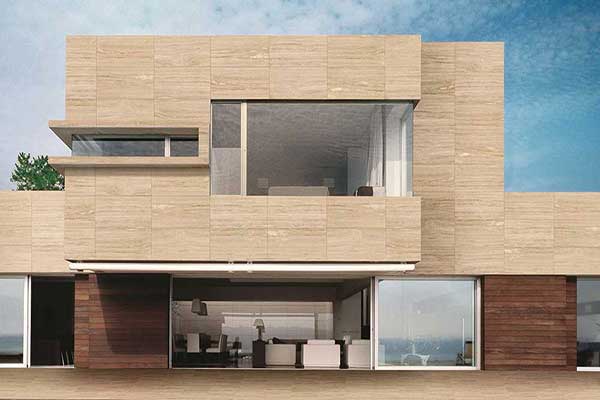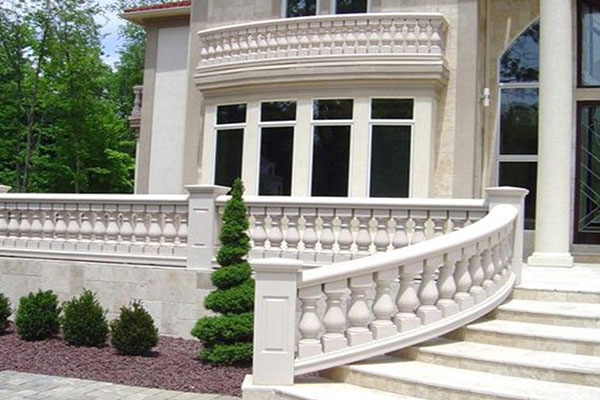- Tell : 09131114998
- Email : info@uranus-stone.com
.jpg)
Travertine stone in the building facade of wet areas
- 1401/08/01 ,
- stone industries Uranus
- 0 Comment
Many people who are engaged in building villas or apartments in the northern cities of Iran, use beautiful and special facade stones to create an impressive view. But not all stones have the ability to deal with extreme humidity and air humidity. Some stones are separated from the building and fall after water penetration. Or they crack and break due to exposure to heavy rain and snow. Among the types of natural stones that are extracted, there are stones that have less lime and less water absorption.
Limestones do not have a significant ability to penetrate water and are easily affected and react to moisture. Travertine stone is one of the best stones that is suitable for humid and humid areas in the north. Travertine stones are suitable and practical for use in the northern cities of Iran due to their very low porosity. Also, travertine stones have much less lime than the size of facade stones.
What stone is not suitable for the view of Sharjai areas?
Stone facade is one of the main building materials that is exposed to the public. For this reason, many people use marble, marble and granite stones for building facades. Perhaps marble and granite stones have a luxurious and stylish appearance, but because they have a very high level of lime, they are not suitable for wet and humid areas at all.
Granite stones also contain minerals such as iron in a very high amount. After being exposed to humid air, the iron in granite stones will oxidize and the appearance of the facade will be greatly reduced.
The lime in marble or granite rocks reacts and turns into dead lime after contact with rainwater or melted ice. Dead lime settles on the stone like a white stain and over time causes the stone texture of the building to disappear. Dead lime does not disappear even with water, and because of this, the external structure of many buildings suffers destruction and decay.
Fortunately, there are countless travertine mines in Iran. Large factories can also be used in the construction of northern cities by extracting and cutting stones with standard dimensions. Porosity in travertine stones is improved and filled with resin. In the same way, they will not be damaged or changed in spite of heavy rain.

Travertine on the facade of the building
The formation process of travertine has given it a very unique structure, a structure full of small and large voids, many of which are filled with secondary materials and many of which remain empty. Perhaps the existence of these structural holes can be considered as the most important characteristic of travertine, and most of the favorable characteristics of this stone are due to these holes.
These holes give very good adhesion with cement during the implementation of travertine, especially in the facade of the building. In addition, these voids filled with air act as a suitable space to neutralize the contraction and expansion of the stone, and this is one of the reasons for the expansion of the use of travertine in the exterior of buildings.
The possibility of applying different processes on travertine stone due to its structural features is one of the advantages that make this stone very suitable for building exteriors. Among other reasons that lead people to implement the exterior of the building with travertine stone.
The price of travertine is reasonable compared to other stones, and on the other hand, it is easier to process this stone. In other words, it can be easily cut in different dimensions and used in different spaces and different applications.
The color range of travertine stone is one of the most important factors that make this stone a very suitable option for use in the exterior of the building. Different colors in travertine are formed due to the presence of different minerals, which are very durable and do not fade or fade due to sunlight.
The special color spectrum of travertine stone along with various processes on it gives it a beautiful luxury appearance. Travertine, with its bright color tone, is considered one of the cool stones, because the amount of absorption of the heat emitted by the sun is very low by this stone.
What should be considered when choosing stone facades for villas and buildings in the northern regions:
The way travertine stones are formed is different from the way marble is formed, and the same thing causes extreme strength in travertine stone. The formation of travertine stone causes a dense texture in the stone and forms a suitable porosity. The porosity created in the texture of travertine leads to the adhesion of construction mortar to the stone, and this helps to increase the strength of the stone against water and humidity.
If you are engaged in construction in northern areas, when buying travertine stone, make sure that the pores of the stone are well resinated. Because if these voids are not filled well, they will become a place for water accumulation and will freeze in the cold weather. Continuous freezing causes cracks and breaks in travertine stones and reduces the life of the stone.
in the end :
Each of the building stones has unique characteristics, but each of them changes shape in different climates or suffers damage due to the erosive factors of nature. Before buying facade stone for the building, you should know the characteristics of some stones and their durability in different climates. Travertine stone, with its unique features, next to marble and granite, can be a suitable option for use in the facade of your building. Click for more information, coordination and advice.
Travertine
Travertine stone
Travertine stone in the facade of the building
